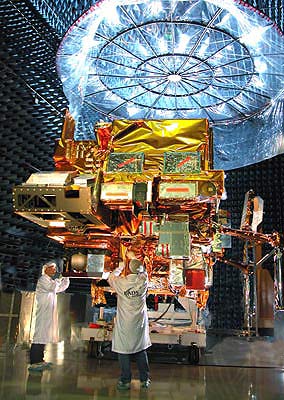Metop satellites
The Meteorological Operational satellite (Metop) series represents a critical component of the global weather monitoring system, operated by the European Organisation for the Exploitation of Meteorological Satellites (EUMETSAT) in collaboration with the European Space Agency (ESA) and other international partners. These polar-orbiting satellites are essential for operational meteorology, climate monitoring, and atmospheric science.
The Metop satellites are designed to operate in a polar orbit, which allows them to cover the entire Earth's surface twice a day, offering invaluable data for weather prediction and atmospheric research. Each Metop satellite is equipped with a suite of advanced instruments that measure various atmospheric parameters, including temperature, humidity, trace gases, and ozone. These instruments provide critical data for numerical weather prediction models, helping to improve the accuracy of weather forecasts. Moreover, the data from Metop satellites support climate research and the monitoring of environmental processes.
The Metop series consists of three satellites: Metop-A, Metop-B, and Metop-C, launched in 2006, 2012, and 2018, respectively. These satellites have significantly enhanced the capabilities of the global weather and climate observation system, providing continuous data that supports a wide range of meteorological and environmental applications.
The first satellite in the Metop series, Metop-A, was deorbited in November 2021. The satellite massively exceeded its expected lifetime of five years.
Metop factsheet
- Orbit: sun-synchronous polar orbit, morning orbit 09:30 local time descending node)
- Inclination: 98.7° to the Equator
- Altitude: 800 - 850 km
- Total mass: 4086 kg
- Dimensions: height 17.6 m, length 6.7 m, width 5.4 m (in-orbit configuration)
- Average power consumption per orbit: 1812 W

